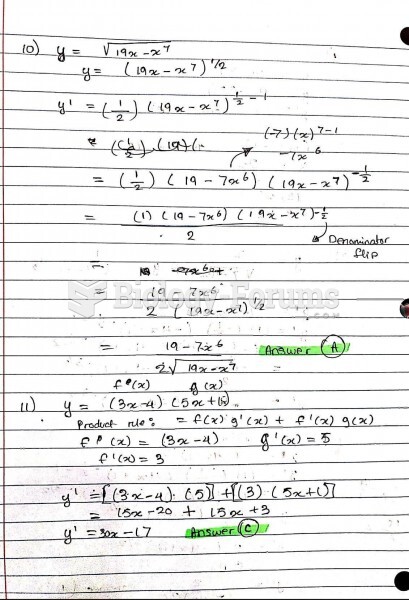Answer to Question 1
Correct Answer: 3
Rationale 1: Human DNA and bacterial DNA have vastly different enzymes necessary for replication.
Rationale 2: Fluoroquinolones affect enzymes needed for bacterial DNA replication, and they do not target the enzymes present in human DNA cells. There is no indication that human DNA is healthier than bacterial DNA.
Rationale 3: It is thought that medications such as fluoroquinolones are very safe to use because they do not affect human DNA replication. This is because the enzymes that the medications affect in bacterial DNA replication are very different from the enzymes present in human DNA cells.
Rationale 4: Fluoroquinolones offer no protection to human DNA. They do not affect human DNA replication because the enzymes needed for human DNA replication are different from the enzymes needed for bacterial DNA replication.
Global Rationale: These drugs have no effect on human enzymes involved in DNA replication because of significant differences in the chemical structures of the human and bacterial enzymes. These differences account for their selective toxicity on bacteria, and their favorable safety profile. The statement regarding DNA health is inaccurate. These drugs offer no protection to human DNA.
Answer to Question 2
Correct Answer: 3
Rationale 1: Fluoroquinolones do not appear to affect the enzyme DNA polymerase.
Rationale 2: Fluoroquinolones do not prevent migration of the new DNA strands in order to prevent bacterial cell replication.
Rationale 3: It is thought that fluoroquinolones fight gram-negative organisms by binding to DNA gyrase, thereby inhibiting the ability of the supercoil to relax, resulting in termination of bacterial cell replication.
Rationale 4: Fluoroquinolones do not appear to affect the unwinding process of the supercoil.
Global Rationale: The fluoroquinolone antibiotics act on two enzymes in the DNA replication process. First, they bind to DNA gyrase, inhibiting its ability to relax the supercoiling of the bacterial DNA. When the replication enzymes reach an area still in a supercoiled state, replication terminates. A second mechanism is binding to topoisomerase IV. When this occurs, the two daughter DNA strands cannot migrate to opposite sides of the cell, and division cannot be completed. They do not appear to affect the unwinding process itself or to prevent migration, and do not affect the enzyme DNA polymerase.







